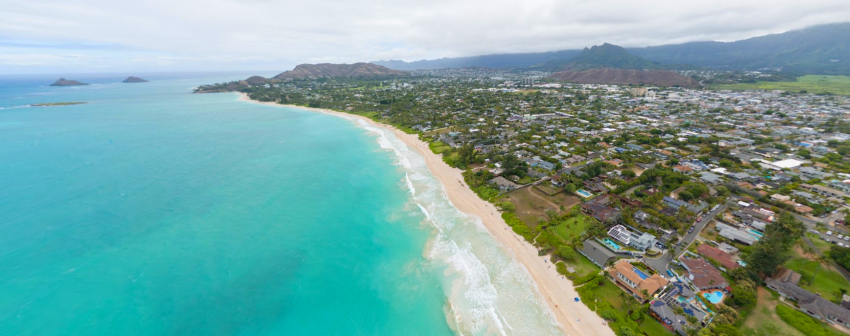Kailua Map
Description:
This map shows peaks, viewpoints, streets, roads, beaches, rivers, buildings, and parks in Kailua.
Size: 2066x2618px / 1.56 Mb
Author: Ontheworldmap.com
Map based on the free editable OSM map openstreetmap.org.
You may download, print or use the above map for educational, personal and non-commercial purposes. Attribution is required. For any website, blog, scientific research or e-book, you must place a hyperlink (to this page) with an attribution next to the image used.
Map of Downtown Kailua
Description:
This map shows streets, houses, buildings, cafes, bars, restaurants, parking lots, shops, churches, points of interest, restrooms, and parks in Downtown Kailua.
Size: 2495x1930px / 1.39 Mb
Author: Ontheworldmap.com
Map based on the free editable OSM map openstreetmap.org.
You may download, print or use the above map for educational, personal and non-commercial purposes. Attribution is required. For any website, blog, scientific research or e-book, you must place a hyperlink (to this page) with an attribution next to the image used.
Kailua Location On The Hawaii Map
Online Map of Kailua
About Kailua
Kailua is a census-designated place (CDP) located in the county of Honolulu on the eastern shore of Oahu, Hawaii, United States. It is situated approximately 12 miles northeast of Honolulu and has a population of about 40,000 residents. The name "Kailua" means "two seas" or "two currents" in the Hawaiian language, referring to the two lagoons or currents that once flowed through the district. The area is known for its stunning beaches, pleasant climate, and suburban residential character that offers a marked contrast to the more urbanized Honolulu.

Geographically, Kailua is positioned on the windward (eastern) side of Oahu, nestled between the Ko'olau Mountain Range and Kailua Bay. The town encompasses approximately 10.6 square miles of land. Its windward location results in more rainfall and consistent trade winds compared to the leeward parts of the island. The community is built around Kailua Bay and features several wetland areas, including Kawainui Marsh, the largest wetland in the state of Hawaii and a designated Ramsar Convention wetland of international importance.
The history of Kailua extends back to ancient Hawaiian settlements. Archaeological evidence suggests the area has been inhabited since at least the 15th century. In pre-contact Hawaii, Kailua was an important political center and residence for chiefs. During the early 20th century, the region transitioned from primarily agricultural activities to a residential area. The construction of the Pali Highway in 1957 significantly improved access between Kailua and Honolulu, accelerating development. Military presence increased substantially during World War II, contributing to the area's growth and demographic shifts. Following the war, Kailua transformed from a small town into a suburban community.
Today, Kailua's economy is centered around tourism, retail, and services that cater to both visitors and residents.
The town is renowned for its natural attractions, particularly its beaches. Kailua Beach Park is consistently ranked among America's best beaches, featuring over 2.5 miles of white sand and turquoise water. Adjacent Lanikai Beach is famous for its calm waters and views of the picturesque Mokulua Islands offshore. The Lanikai Pillbox Hike (officially known as the Ka'iwa Ridge Trail) offers panoramic views of the windward coast and has become increasingly popular with visitors. Kailua Town provides shopping and dining experiences with a mix of local businesses and national chains. Other recreational opportunities include water sports such as kayaking, paddleboarding, and kitesurfing, which are popular activities in the consistently windy conditions of Kailua Bay.
The Facts:| State: | Hawaii |
| Island: | Oahu |
| County: | Honolulu |
| Population (2020): | 40,514[1] |
| Density: | 5,213/sq mi (2,013/sq km) |
| Area: | 10.59 sq mi (27.44 sq km) |
| Coordinates: | 21°23′51″N 157°44′22″W |
| ZIP Codes: | 96734 |
| Area code(s): | 808 |
| FIPS code: | 15-23150 |
| GNIS feature ID: | 359894 |
Beaches Around Kailua
- Kailua Beach Park
- Lanikai Beach
- Kalama Beach Park
- Bellows Field Beach Park
- Waimanalo Beach
- Kaiona Beach Park
- Makapuu Beach
- Kaupo Beach
- Maunalua Bay Beach Park
- Kahana Bay Beach Park
Main sights in Kailua
- Kailua Beach Park
- Lanikai Beach
- Mokulua Islands (The Mokes)
- Lanikai Pillbox Hike (Ka'iwa Ridge Trail)
- Kailua Town Center
- Kawai Nui Marsh
- Ulupo Heiau State Historic Site
- Maunawili Falls Trail
- Ho'omaluhia Botanical Garden
- Kailua Farmers Market
How to get to Kailua
From Honolulu/Waikiki
- By Car:
- Take H1 East from Honolulu
- Connect to Pali Highway (Route 61)
- Drive through the Pali Tunnel
- Continue straight as the highway becomes Kailua Road
- Follow Kailua Road into town (approximately 30-40 minutes from Waikiki)
- By Bus:
- Take TheBus Route 65 or 67 from Honolulu
- Trip takes approximately 1 hour
- Visit TheBus website for current schedules
- By Rideshare: Uber and Lyft are available from Honolulu to Kailua (approximately $35-50)
From Honolulu International Airport
- By Car:
- Exit the airport and follow signs to H1 East
- Take H1 East to the Pali Highway exit (Route 61)
- Follow the Pali Highway through the tunnel
- Continue as the highway becomes Kailua Road into town
- Drive time: approximately 30-45 minutes
- By Taxi/Rideshare: Available at the airport (approximately $50-65)
Alternative Scenic Routes
For a more scenic drive, consider taking the Kalanianaole Highway (H72) around the southeast side of the island, past Hanauma Bay and Makapuu. This route takes longer but offers spectacular coastal views.
Tips
Traffic can be heavy during rush hours (6-8am and 4-6pm). The Pali Highway occasionally closes during strong winds or maintenance.
References
1. ^ QuickFacts Kailua CDP (Honolulu County), Hawaii. U.S. Census Bureau.U.S. Maps
Cities of USA
States of USA
States of USA



